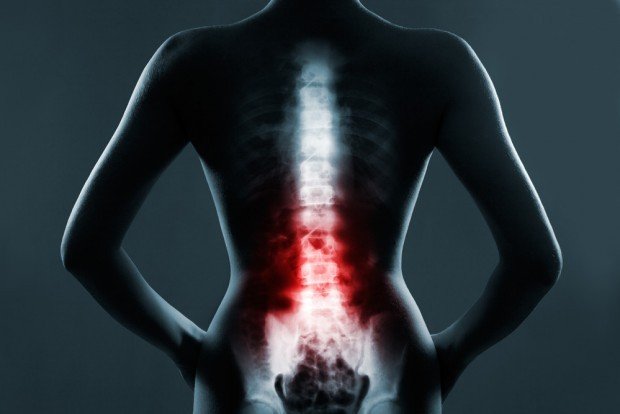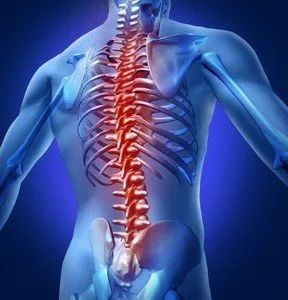There are a number of spinal conditions that if left untreated can become very serious, eventually demanding surgery to cure the patient of pain. Many treatments can alleviate the symptoms, but for some people, this is a temporary fix.
In this article, we will provide an overview of some of the spinal conditions that may demand surgery if they become too severe, from spondylolisthesis to a slipped disc. Longevity Live Paid Content.
Spinal Conditions that require surgery

The human spinal column
Below are some of the most common spinal conditions that can cause significant pain and contribute to other unpleasant symptoms. If treatments are ineffective, then these conditions are likely to demand surgery to help fix the issue.
Spondylolisthesis
Spondylolisthesis occurs when one of your vertebrae (bones in your spine) moves out of position, coming into contact with your other vertebrae, your spinal cord, or the nerves in the spine. This can happen anywhere in the spine, but it is most common in your lower back.
Main Symptoms
Symptoms include:
- Pain in your lower back that is aggravated by standing or walking for a prolonged period of time
- The pain spreads into your buttocks and thighs
- Tight Hamstrings
- Pain, numbness, and a tingling sensation that spreads from your lower back to your thighs. (Sciatica)
Recommended Surgery
If your spondylolisthesis is severe, then your doctor may recommend a surgical procedure. The common procedure to cure spondylolisthesis is lumbar decompression, followed by spinal fusion. The different types of surgeries will be discussed in the final section.
Modern advancements have also led to a new cure of severe spondylolisthesis. A TOPS system provides all the advantages of decompression and fusion surgery, but without the negatives, such as a lack of mobility. When fitted, a TOPS System helps to maintain a full range of motion in the back, mimicking the natural movement of your vertebrae.
Recovery
Recovery from this type of surgery can take several weeks.
Spondylolysis
Spondylolysis is similar to spondylolisthesis, but differs in that it is caused by a stress fracture to the lumbar vertebrae. It generally affects the thin bone known as the pars interarticularis which separates two joining vertebrae. This condition is said to impact one in twenty people, but is sometimes symptomless.
Main Symptoms
The main symptom of spondylolysis is back pain, however, this pain can sometimes spread to other regions of the body.
Recommended Surgery
Surgery is often a possibility for adolescents who are suffering from spondylolysis. This surgery requires a 2-3 inch incision to be made in the lower back, with a titanium screw used to repair the fracture. Sometimes a bone graft is put in place to secure the area (spinal fusion).
Recovery
For adolescents, the recovery time is usually 2-3 days spent in the hospital and 2-4 weeks of home recovery.
Lumbar Spinal Stenosis
Spinal Stenosis occurs when the space around the spinal cord becomes too narrow, resulting in pressure on the nerves. It is most prevalent in the lower back (lumbar). It is most common amongst older people, as a result of the general aging process, as bones and tissue gets worn down.
Main Symptoms
- Back pain
- Numbness, weakness, and tingling sensations in one or both legs
Recommended Surgery
To alleviate this pressure, lumbar decompression surgery is recommended if treatments prove to be unsuccessful.
Recovery
Lumbar decompression surgery has an expected recovery time of between 4-6 weeks.
Herniated Discs
A herniated disc (or slipped disc) is when the soft tissue between the vertebrae (the discs) slips out of position and comes into contact with the spinal cord or nerves, causing pain. The most common cause of this is aging, as the discs lose moisture over time, causing them to shift out of place. Rest and gentle exercise can sometimes cure the condition, but if there is no improvement, surgery may be required.
Main Symptoms
Symptoms of a slipped disc are:
- Lower back pain
- Neck pain
- Numbness or tingling in the shoulders, arms, back, legs, and feet
- Weakness in the muscles
- It is difficult to bend over or straighten your back
- Sciatica
Recommended Surgery
Surgery is not usually required for a herniated disc, but if the symptoms show no sign of waning, and pain persists, a discectomy may be recommended.
Recovery
Recovery time for a discectomy is between 4-6 weeks.
Lumbar Radiculopathy/ Sciatica
Radicular pain (also known as sciatica) is the compression and inflammation of the spinal (sciatic) nerve. As a result, the pain spreads down to the legs, even making its way down to the foot in some cases. It can be aggravated by sitting, standing, or walking for too long.
Main symptoms
- Pain in the buttocks, back of your legs, feet, and toes.
- Numbness, weakness, and tingling in the same area.
Recommended Surgery
In very extreme circumstances, a microdiscectomy may be recommended to cure a person’s sciatica.
Recovery
The recovery time for a microdiscectomy can be between 7-12 weeks.
What are the different types of surgery?
- Spinal Fusion – This procedure uses a bone graft, screws, and rods to fuse two vertebrae together to stop any unwanted symptoms and pain. The downside to this type of surgery is that it can limit movement in the spine.
- Lumbar Decompression Surgery (Laminectomy) – A laminectomy is when part of the bone (in this case the lamina) is removed from the vertebrae to create more space, thus, relieving any pressure on the nerves.
- Discectomy – This procedure removes the problem area of a herniated disc, usually the part of the disc that has managed to push through the outer layer and come into contact with the nerves.
- Microdiscectomy – This is when a small part of the disc is removed, without causing any disruption to the bone or surrounding tissue. This relieves pressure on the nerves.
- TOPS System – This device is an alternative to spinal fusion and mimics the movement of vertebrae to maintain mobility.



![women [longevity live]](https://longevitylive.com/wp-content/uploads/2020/01/photo-of-women-walking-down-the-street-1116984-100x100.jpg)










